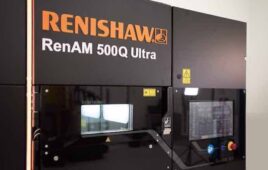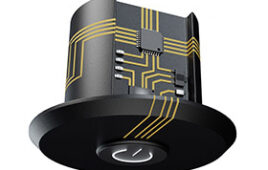Elastomers have been used in many applications, due in no small part to their elasticity, resilience, and electrical and thermal insulation. They are often used to develop soft robots, flexible electronics, and smart biomedical devices that require soft and deformable material properties to establish safe and smooth interactions with humans externally and internally.
So far, the most widely used silicon rubber-based elastomers require a thermal curing process which significantly limits its fabrication in traditional ways, like cutting, molding and casting, which constrains design freedom and geometric complexity. Researchers attempted to use 3D printing tecniques to combat these limitations and enrich the design and fabrication flexibility.
Researchers from the Singapore University of Technology and Design developed a family of highly stretchable and UV curable (SUV) elastomers that can be stretched by up to 1,100 percent, and are suitable for UV curing-based 3D printing techniques. The research is a collaborative effort between researchers from the university’s Digital Manufacturing and Design (DManD) Centre, which is funded by the Singapore National Research Foundation (NRF), the Hebrew University of Jerusalem (HUJI), and the Campus for Research Excellence and Technological Enterprise (CREATE), also funded by the NRF. The project was featured in the Journal of Advanced Materials Feb. 7.
“We have developed the most stretchable 3D printable elastomer in the world,” says Qi Ge, assistant professor with the SUTD’s DManD Centre and one of the co-leaders of the project. “Our new elastomers can be stretched by up to 1,100 percent, which is more than five times the elongation at break of any commercially available elastomer that is suitable for UV curing based 3D printing techniques.”
Using high-resolution 3D printing with the SUV elastomer compositions enables the direct creation of complex 3D lattices or hollow structures that exhibit extremely large deformation.
“The new SUV elastomers enable us to directly print complicated geometric structures and devices such as a 3D soft robotic gripper within an hour. Compared to traditional molding and casting methods, using UV curing based 3D printing with the SUV elastomers significantly reduces the fabrication time from many hours, even days, to a few minutes or hours as the complicated and time-consuming fabrication steps such as mold-building, molding/demolding, and part assembly are replaced by a single 3D printing step,” says Ge.
The SUV elastomers not only sustain large elastic deformation, but also maintain good mechanical repeatability, which makes them good materials for fabricating flexible electronics. To demonstrate this, the researchers fabricated a 3D buckyball light switch that still works after being pressed for more than 1,000 times.
“Overall, we believe the SUV elastomers, together with the UV curing based 3D printing techniques, will significantly enhance the capability of fabricating soft and deformable 3D structures and devices including soft actuators and robots, flexible electronics, acoustic metamaterials, and many other applications,” says Professor Shlomo Magdassi, a co-leader of the project at HUJI and CREATE.
Filed Under: 3D printing • additive • stereolithography, Materials • advanced




